Forest Translation Prototypes / Prototipos traductores de bosques
Produced by Diputación de Granada y Santiago Morilla.
Augmented reality by Aran Art Network.
Computing and sensor electronics by Carles Gutiérrez.
Musical and robotic interactivity by Joaquín Díaz-Durán.
Scientific advisors: Matilde Barón (EEZ-CSIC) and Enrique Pérez (IAA-CSIC)
Music by Lucas Bolaño (Aran Art Network)
Video support by YAP (XOX)
︎
The "Forest Translation Prototypes" are techno-artistic installations created for the informational enhancement of all types of plants (through the sonorization and visualization of 9 external environmental stimuli and 3 internal reactions of the plants, all in real time). So far the prototypes have been tested on a Buxus Sempervirens, commonly known as boxwood (Prototype #1) and on a Ficus Benjamina (Prototype #2), but the system has been designed to be adaptable to any plant or tree. The Augmented Reality technology facilitates human interaction with the data of the plant and its environment (from the interface of an app, specially designed for this project, which processes all the data from the sensors and microcontrollers Esp32, Arduino- MKR, SmartCitizen, etc.)
But, what are the prototype sensors measuring? They are measuring the following 12 parameters: In the left column of the interface (and from top to bottom), the intensity of light [1, in white]; the amount of CO2 and organic volatiles in the air emitted by the plant [2 and 3, in gray], an internal reaction that varies from night to day, or when there are many people near the plant; humidity in the air and near the soil [4 and 6, in light blue]; temperature, in the air and near the soil [5 and 7, in red]; the leaf temperature [8, in yellow], a value provided by a thermal camera, which tells us if the plant is getting stressed or even has a fever; tthe pH of the soil [9, in magenta]: and finally, at the bottom, the level of humidity in the soil [10, in ultramarine blue]. In the central circle of the interface, dominating all the other parameters, we find the level of greenness reflected by the leaf [11, in green], a value provided by a spectrometer, which informs us of the chlorophyll function (calibrated according to the plant species), i.e. the health of the plant in relation to its ability to photosynthesize. On the other hand, always within the perimeter of the central circle, we find floating ten circles that refer to the ten parameters that are referenced in the left column: When these circles are in high positions, the values are above their optimal balance, but, on the contrary, when they are in low positions, the values are below (low light, low CO2 levels, low temperatures, low water, etc.). Thus, at a glance, it is easy and intuitive to perceive the general state of the plant, before consulting the value of each and every parameter. Finally, on the right side of the interface, we find the environmental noise in the room, also monitored in real time [12, in gray].
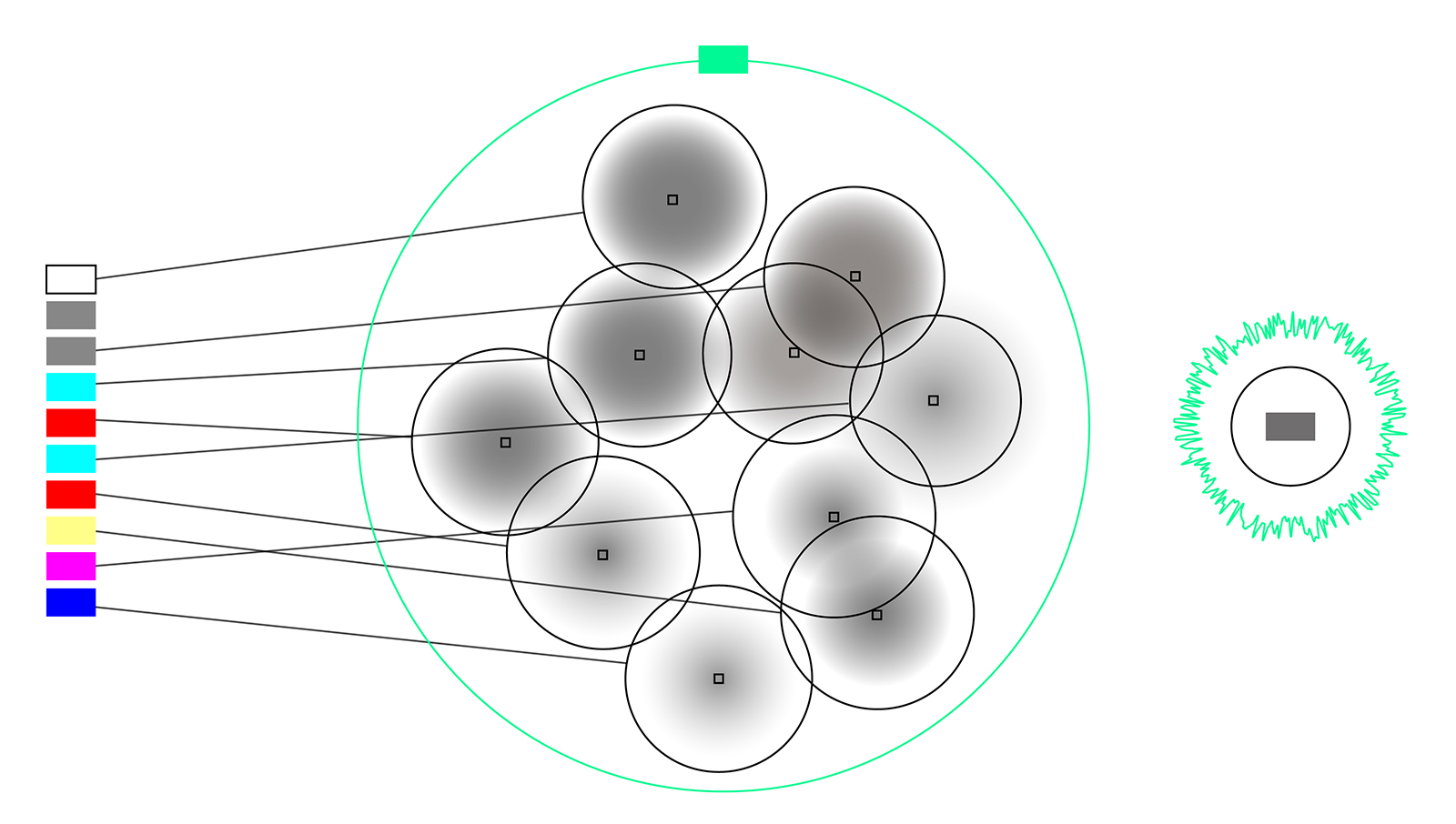
All sensor values are associated with sounds specially composed for the project which, in turn, are integrated into a generative soundscape. These sounds can be selectively turned on and off by clicking on the app interface.
The "Forest Translation Prototypes" bring us one step closer to understanding the role we play within the shared environments between humans and non-humans.
Los “Prototipos traductores de bosques” son instalaciones tecnoartísticas creadas para el aumento informacional de todo tipo de especies vegetales (a través de la monitorización, sonorización y visualización de 9 estímulos ambientales externos y 3 reacciones internas de las plantas, todo en tiempo real). Por ahora los prototipos han sido testados en un Buxus sempervirens, conocido comúnmente como boj (Prototipo #1) y en un Ficus benjamina (Prototipo #2), pero el diseño de sistema se adapta a cualquier planta o árbol. La tecnología de Realidad Aumentada facilita la interacción del humano con los datos de la planta y su entorno (desde la interfaz de una app, especialmente diseñada para este proyecto, que procesa todos los datos de los sensores y microcontroladores Esp32, Arduino- MKR, SmartCitizen, etc.)
Pero, ¿qué miden los sensores instalados en los prototipos? Los siguientes 12 parámetros: En la columna de la izquierda de la interfaz (y de arriba a abajo), la intensidad de la luz ambiente [1, en blanco]; la cantidad de CO2 y de volátiles orgánicos en el aire que emite la planta [2 y 3, en gris], una reacción interna que varían de la noche al día, incluso cuando hay mucha gente cerca de la planta; la humedad en el aire y cerca de la tierra [4 y 6, en azul claro]; la temperatura en el aire y cerca de la tierra [5 y 7, en rojo]; la temperatura de las hojas [8, en amarillo], valor facilitado por una cámara termal, que nos indica si la planta se está estresando o, incluso, si tiene fiebre; el valor del pH en tierra [9, en magenta]: y, por último, abajo, el nivel de humedad dentro de la tierra [10, en azul ultramar). En círculo central de la interfaz, y mandando sobre todos los demás parámetros, encontramos el nivel de verdor reflejado por la hoja [11, en verde], un valor facilitado por un espectrómetro, que nos habla de la función clorofílica (calibrada según sea la especie vegetal que estemos monitorizando), es decir, de la salud de la planta en relación a su capacidad para hacer la fotosíntesis. Por otro lado, siempre dentro del círculo central, encontramos flotando diez círculos que hacen referencia a los diez parámetros enlazados a la columna de la izquierda: Cuando estos círculos están en posiciones altas, los valores se encontrarían por encima de su equilibrio óptimo, pero, por el contrario, cuando están en posiciones bajas, los valores estarían por debajo de dicho equilibrio (poca luz, niveles bajos de CO2, bajas temperaturas, poca agua, etc.). De este modo, de un solo vistazo, es fácil –a vez que intuitivo– percibir cuál es el estado general de la planta, antes de analizar el valor de todos y cada uno de los parámetros. Por último, en la derecha de la interfaz, encontramos el ruido ambiental en sala, monitorizado también en tiempo real [12, en gris].
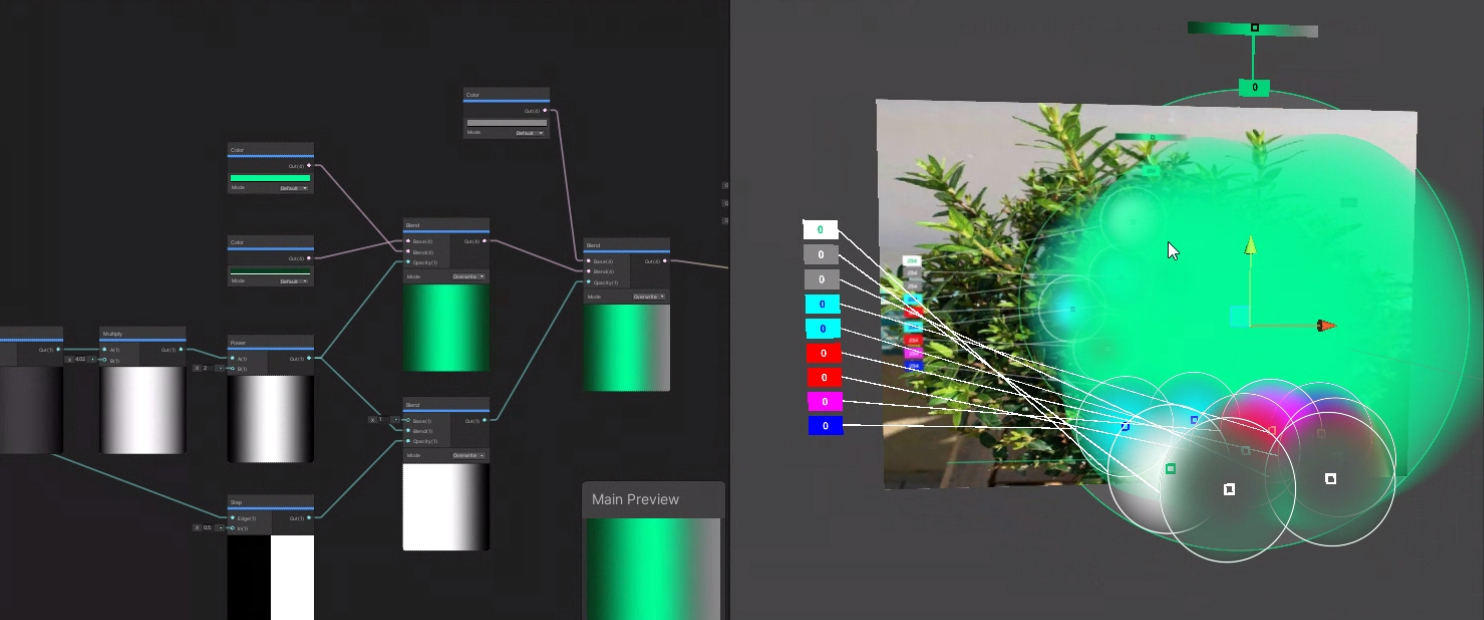
Todos los valores de los sensores están asociados a unos sonidos especialmente compuestos para el proyecto que, a su vez, se integran en un paisaje sonoro generativo. Estos sonidos se pueden apagar y encender selectivamente, clicando en la interfaz de la app. Mediante este sencillo protocolo interactivo, podemos asociar progresiva e intuitivamente imágenes y sonidos a las condiciones externas que afectan a la planta, y a sus consiguientes reacciones internas.
Las dinámicas de sonorización, visualización e interacción presentes en los “Prototipos traductores de bosques” nos acercan un poco más a la comprensión del papel que jugamos dentro de los entornos compartidos con humanos y no-humanos.
︎ 03/2021 © Santiago Morilla
︎ “Forest Translation Prototypes” Single-channel Video Artwork (1:14)




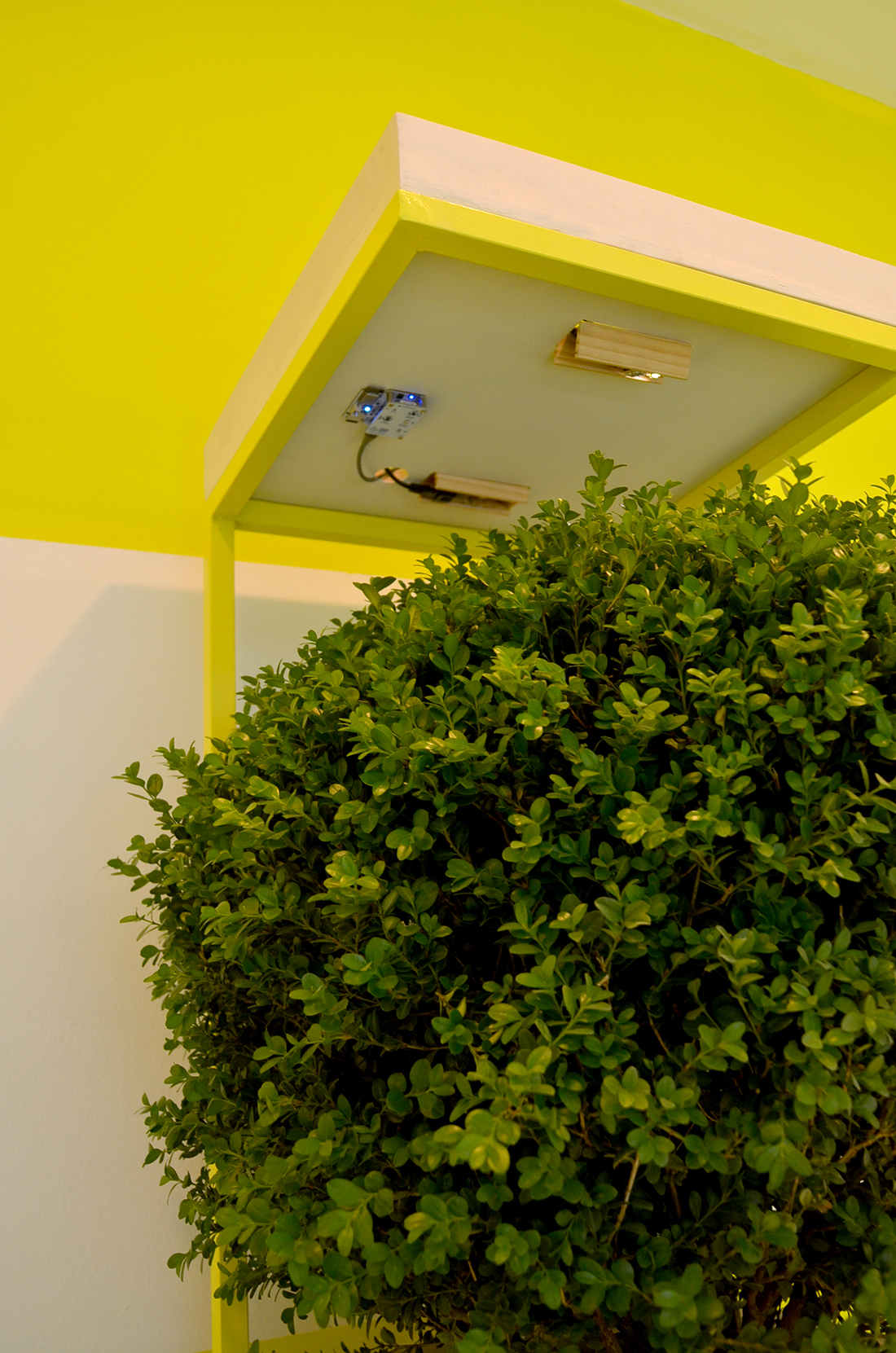
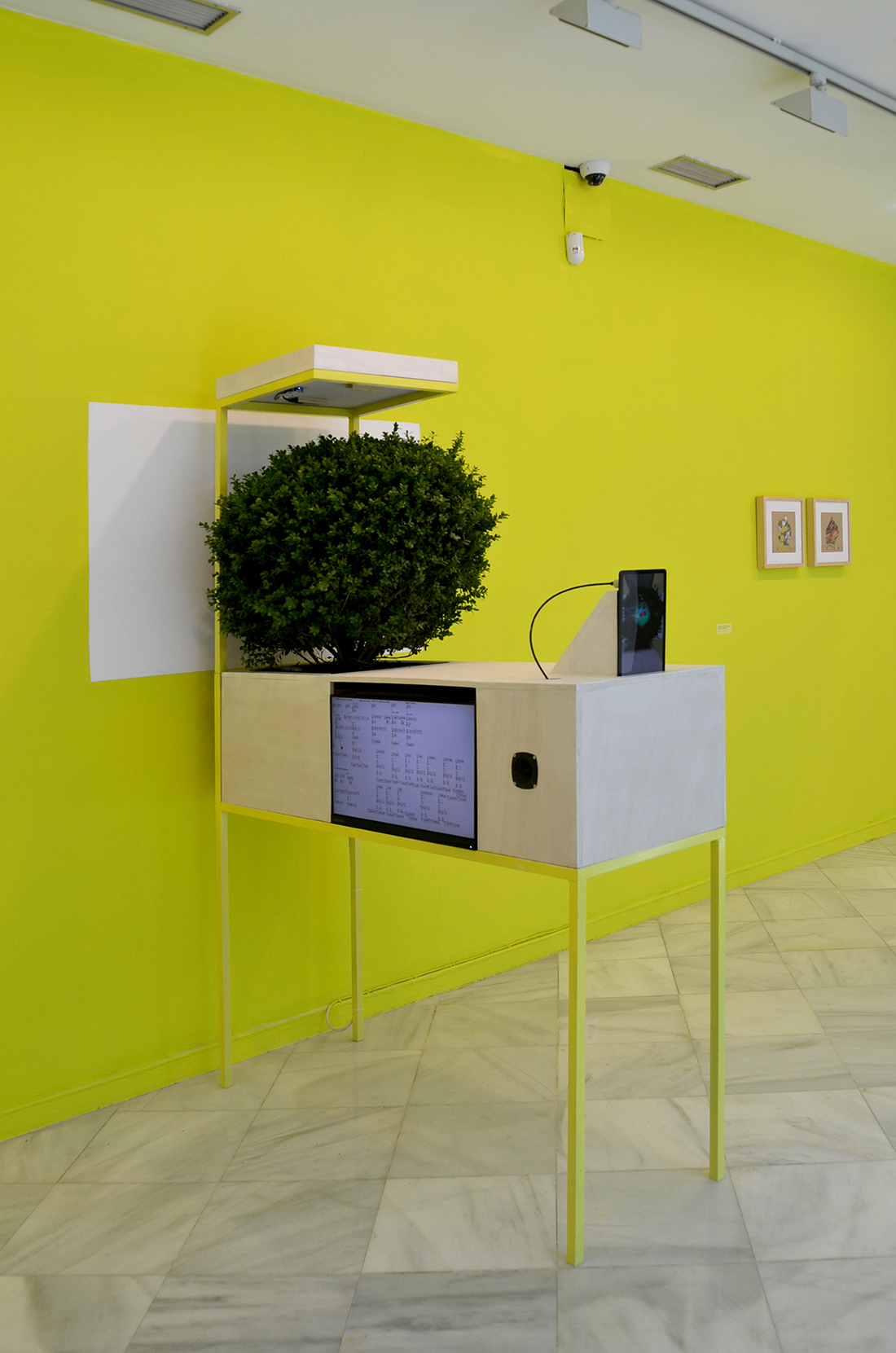


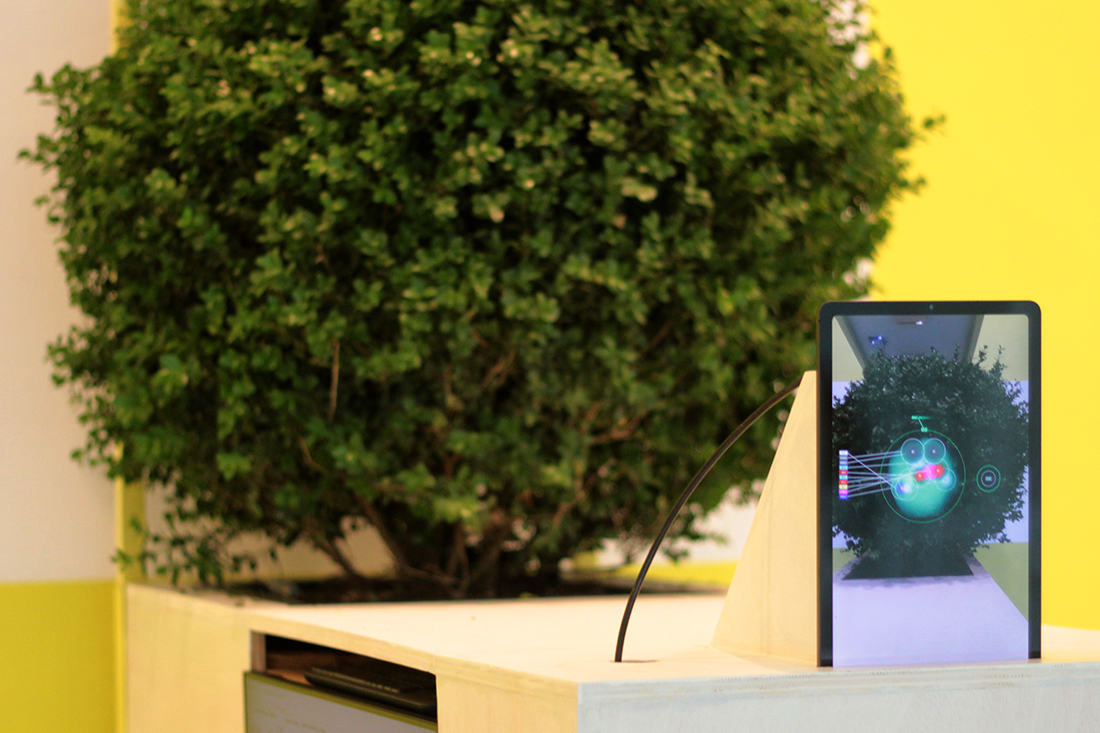
︎ “Forest Translator Prototype #1” in the solo exhibition TRADUCIR UN BOSQUE (26/03-20/06/2021), Palacio de los Condes de Gabia, Granada.
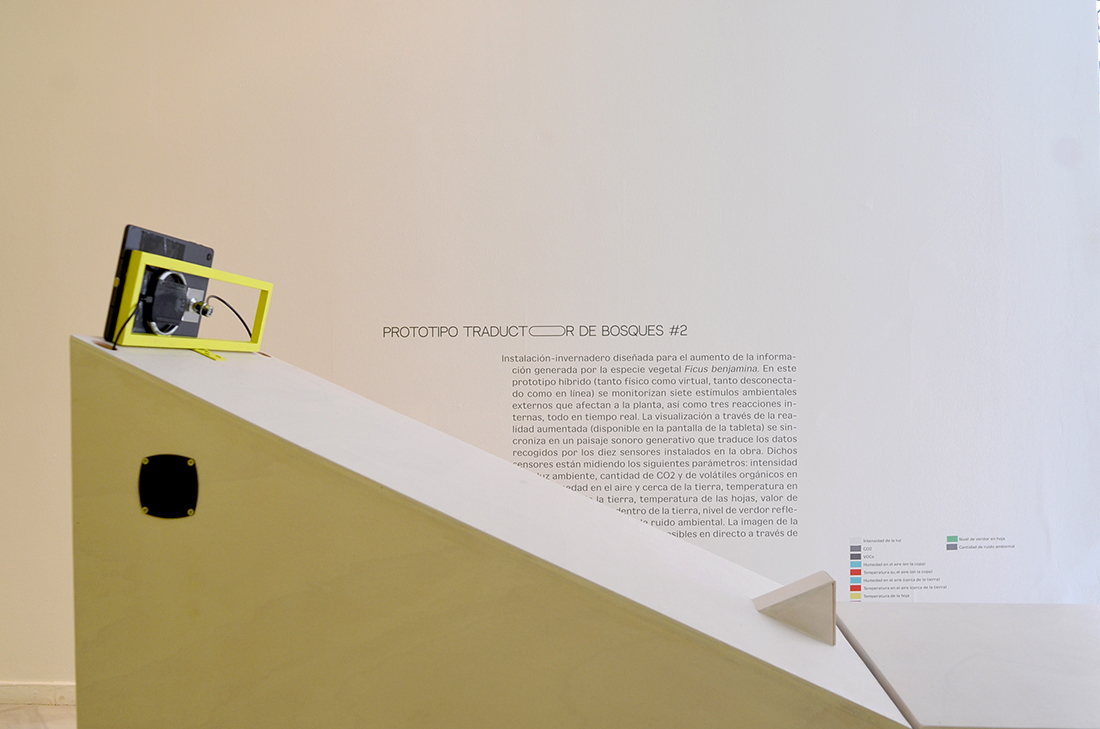
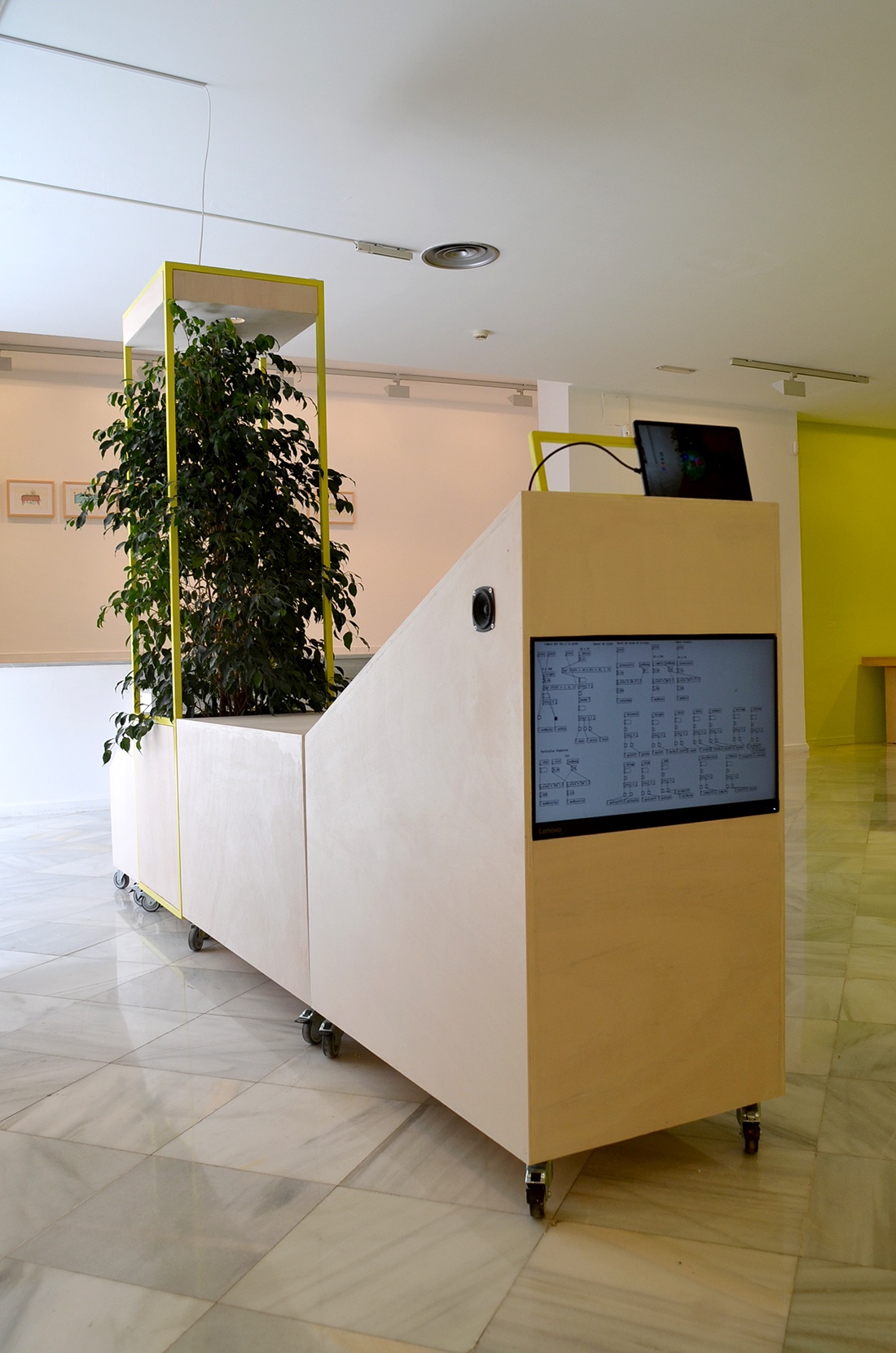
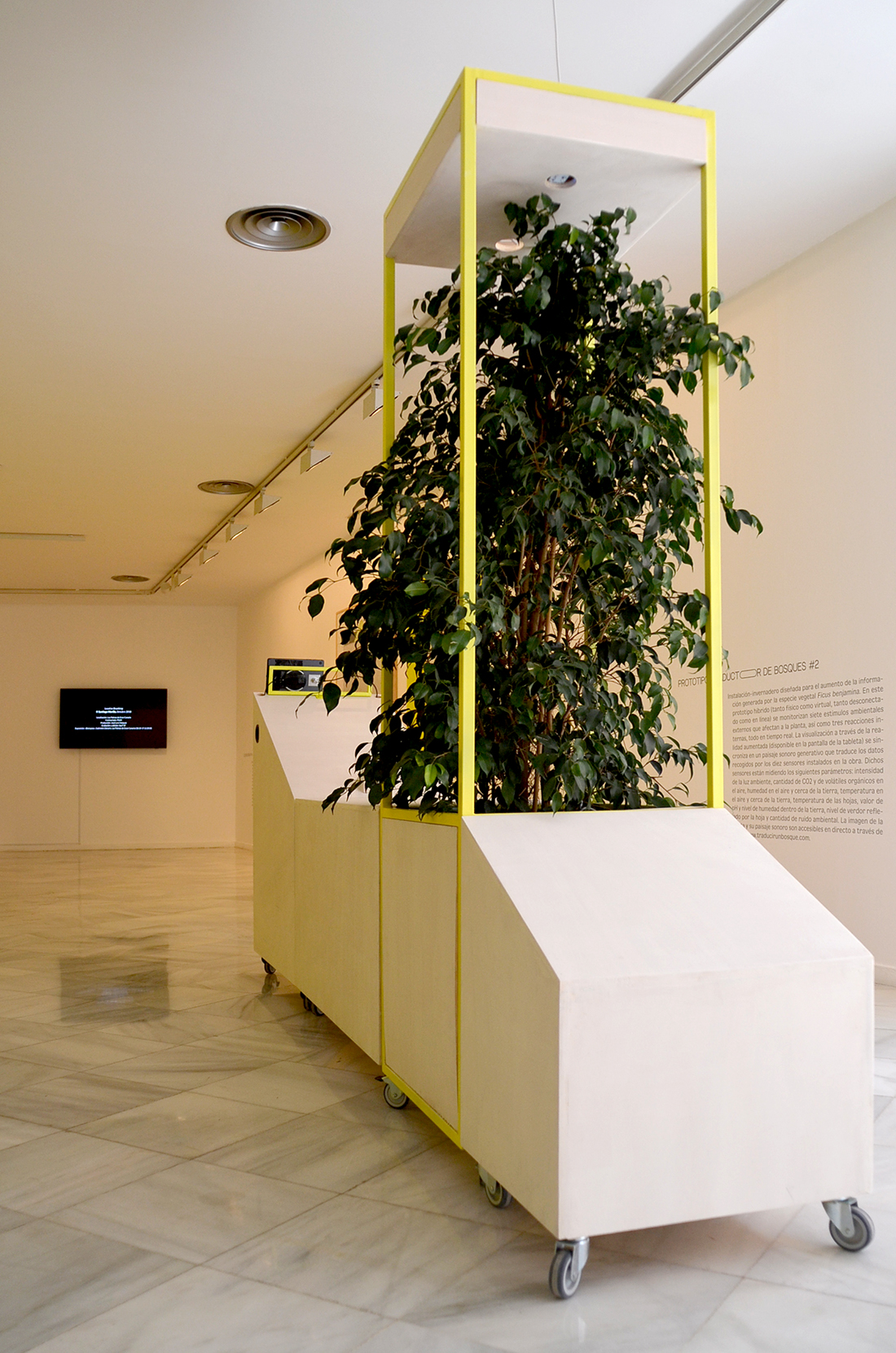

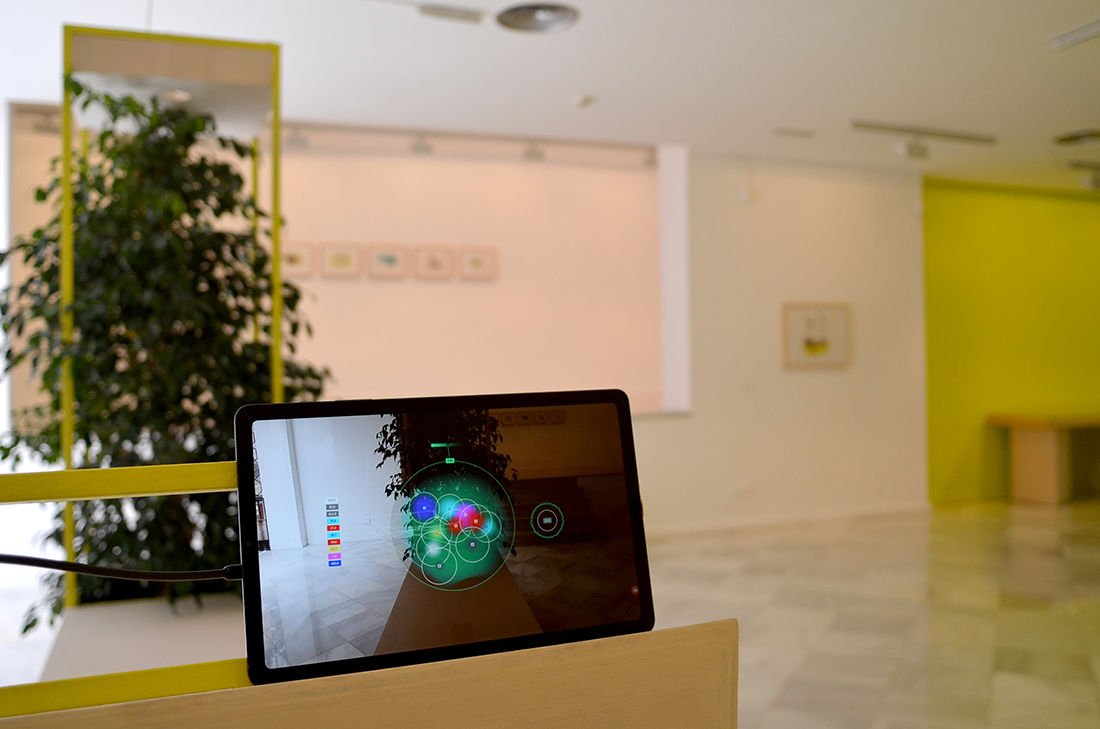
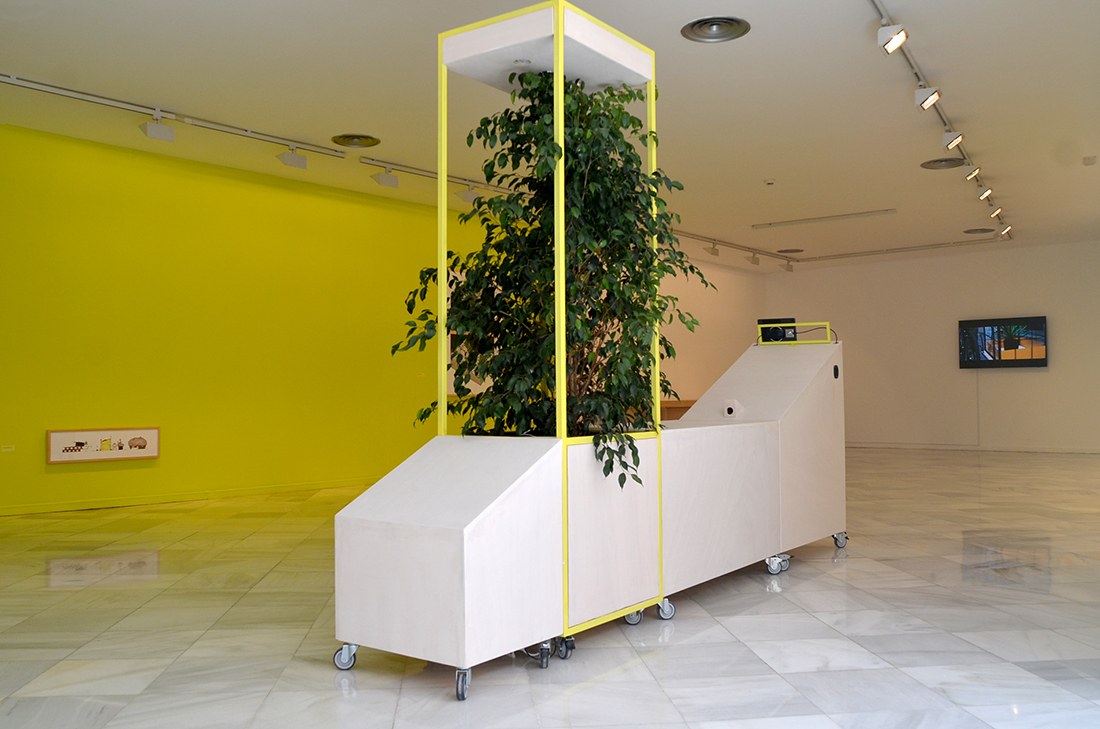
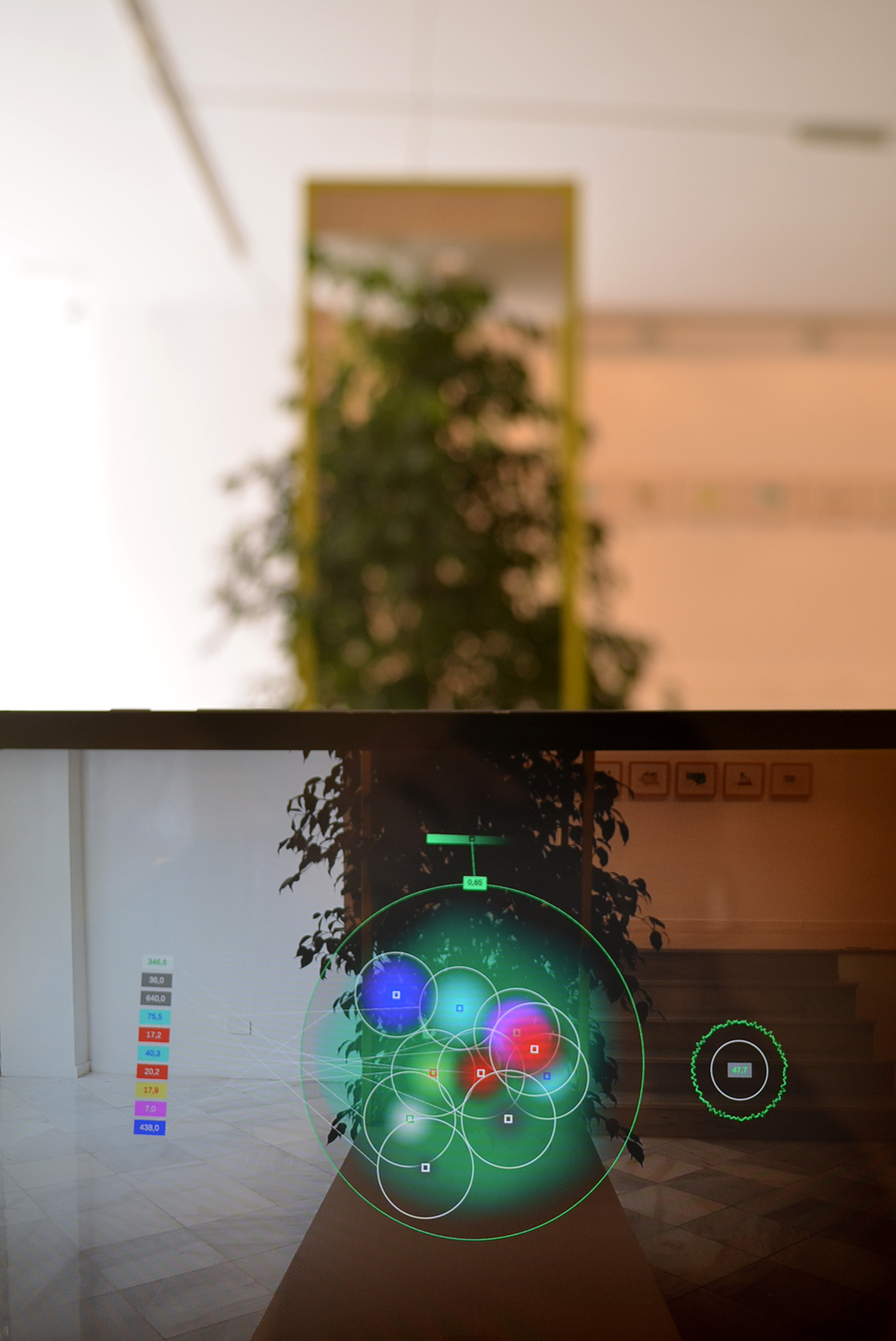

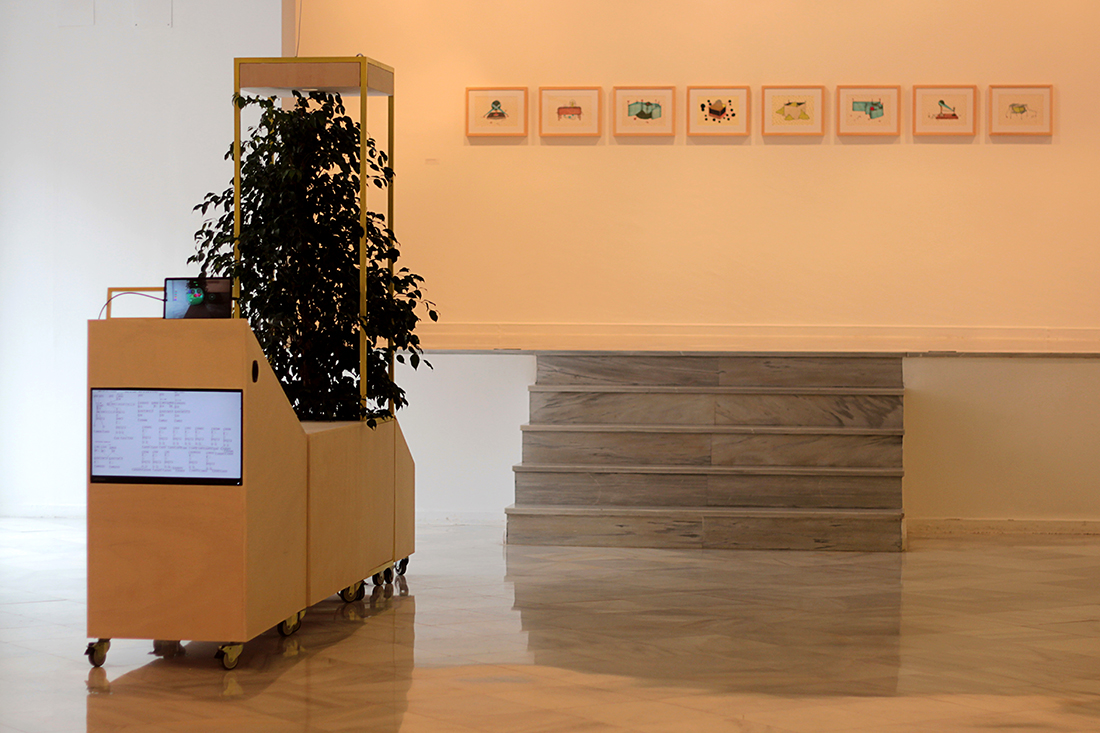
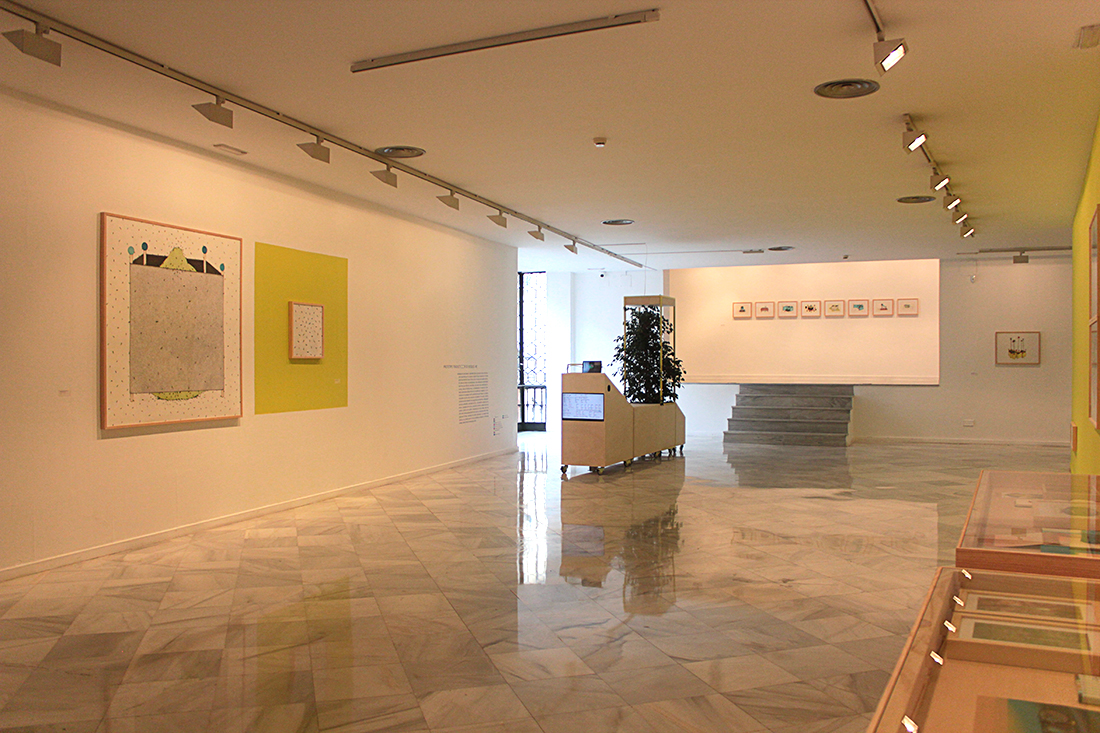
︎ “Forest Translation Prototype #2” in the solo exhibition TRADUCIR UN BOSQUE (26/03-20/06/2021), Palacio de los Condes de Gabia, Granada. Photos by Óscar Jiménez Gijón & Santiago Morilla.